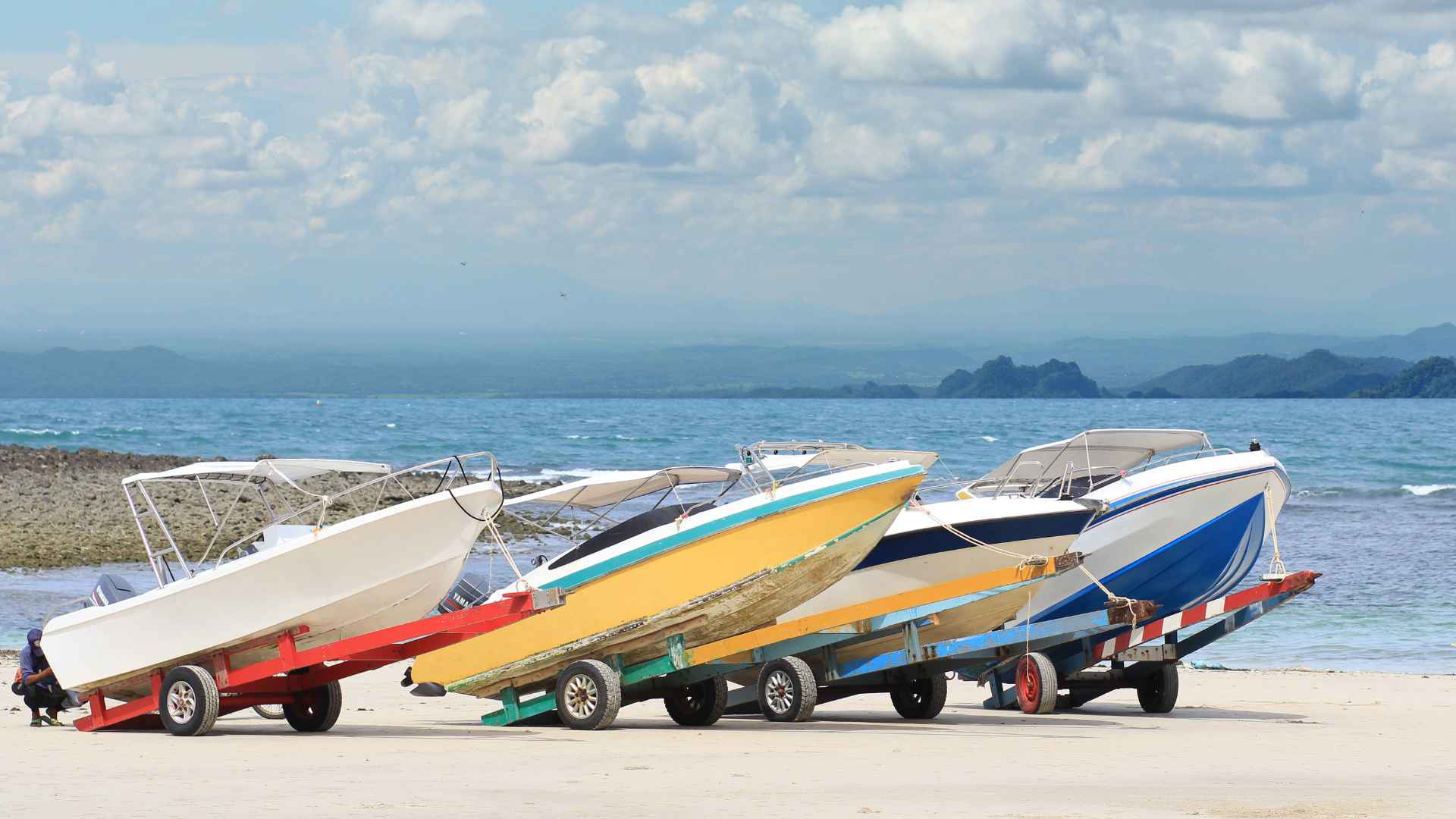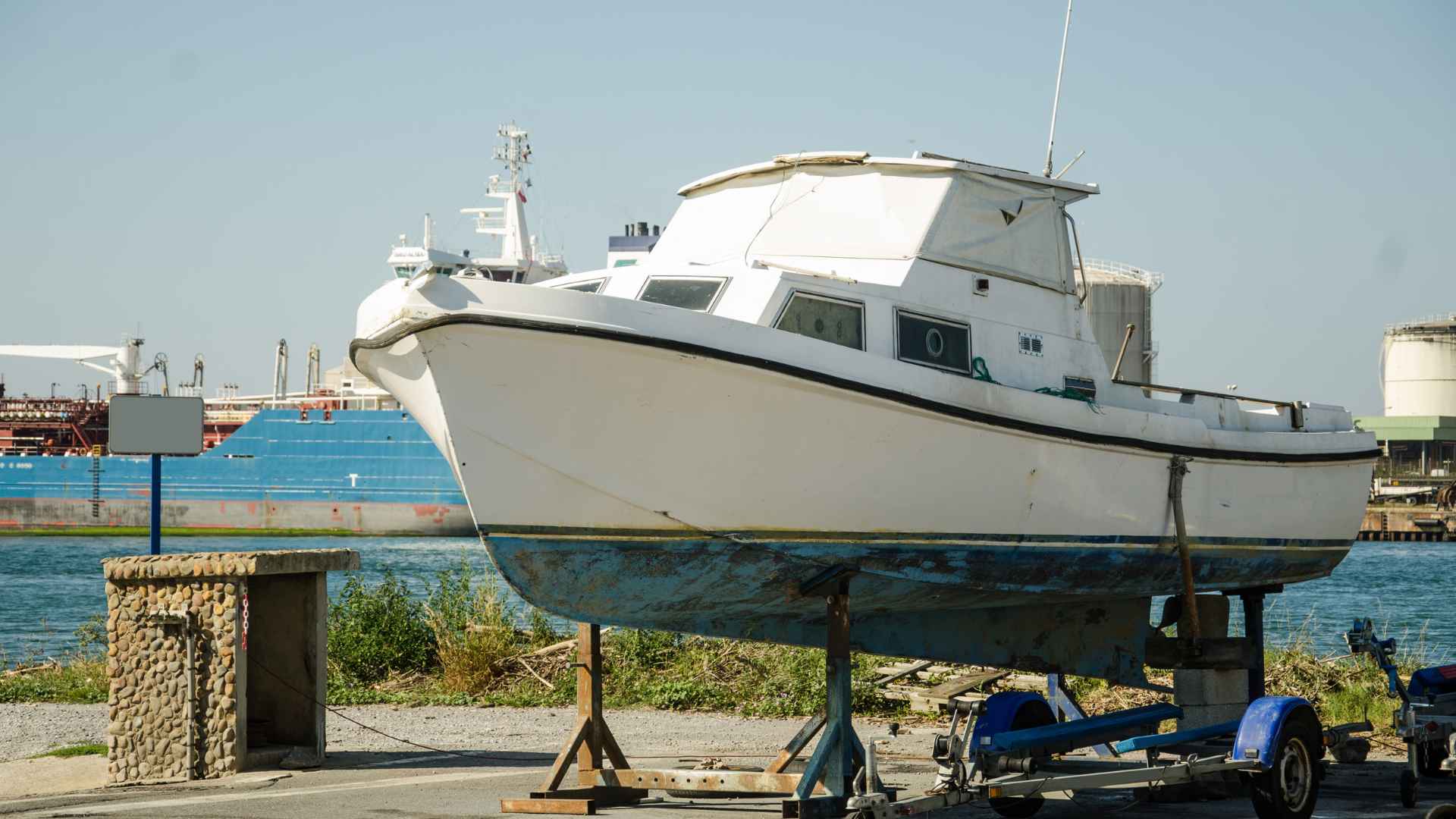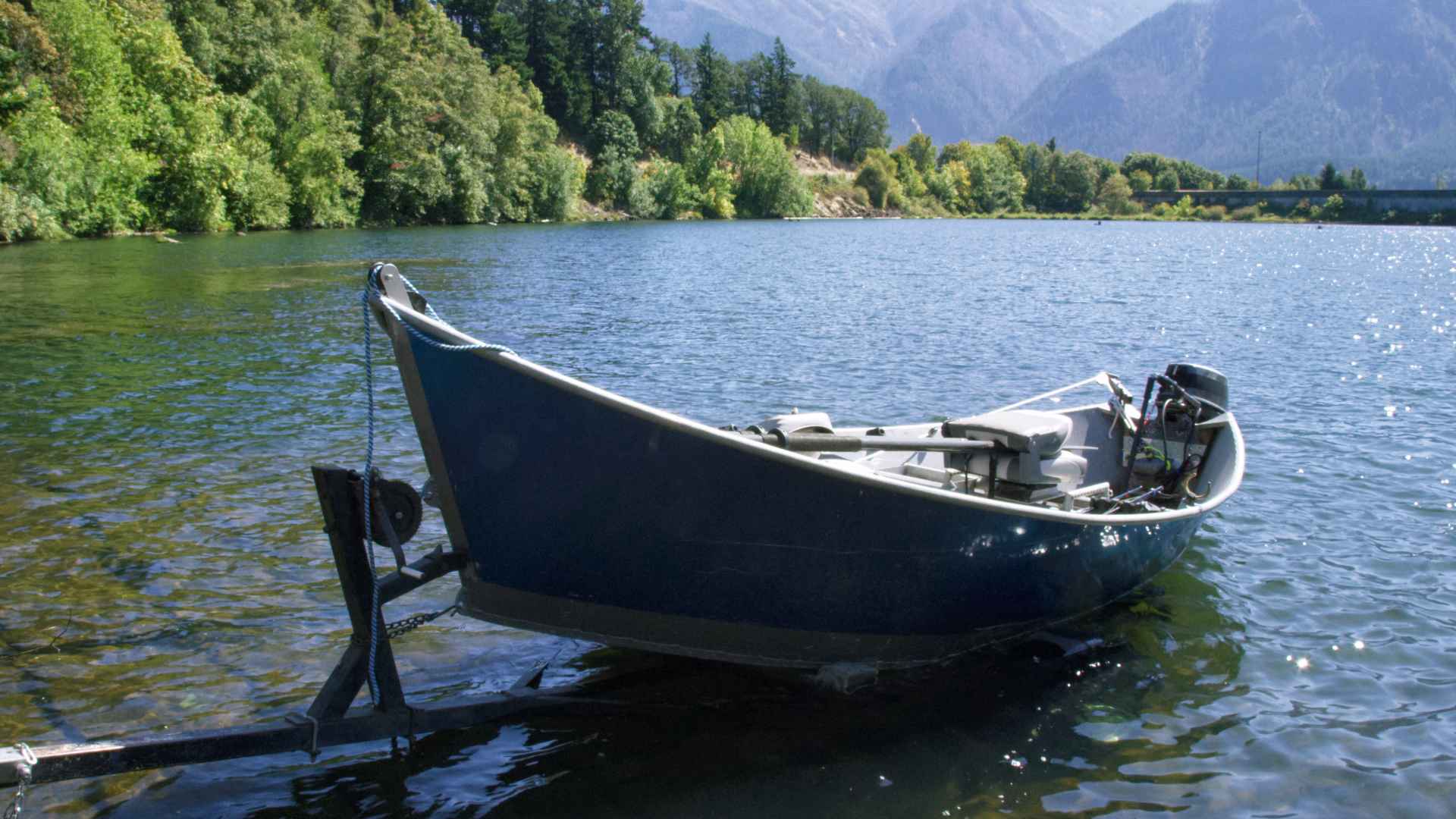Properly aligning a boat on a trailer is essential for safe transportation and storage. The way a boat sits on a trailer can affect its stability, weight distribution, and overall towing experience. Ensuring the boat is positioned correctly on the trailer is crucial to prevent damage, maintain balance, and optimize performance while on the road.
In this article, we will provide guidance on how a boat should sit on a trailer to achieve optimal safety, stability, and performance. By following these guidelines, boaters can have peace of mind knowing that their boat is securely and appropriately aligned on the trailer.
Choosing the Right Trailer

Selecting the right trailer is crucial for safely and effectively transporting a boat. When choosing a trailer, it’s important to consider factors such as the boat’s size, weight, and hull design. The trailer should be properly sized and equipped with support structures that can handle the boat’s weight and dimensions.
The trailer’s bunks or rollers should align with the boat’s hull shape to provide proper support. Bunks are padded supports that cradle the boat’s hull, while rollers allow for easier launching and retrieval. It’s important to ensure that the bunks or rollers are positioned correctly to evenly distribute the boat’s weight and prevent stress points on the hull.
By choosing a trailer that is specifically designed for the boat’s size, weight, and hull design, boaters can ensure a secure fit and proper support, minimizing the risk of damage during transportation and storage.
Positioning the Boat on the Trailer
Positioning the boat correctly on the trailer is essential for safe and secure transportation.
Here are the steps involved in ensuring proper positioning:
- Align the keel: Start by aligning the boat’s keel with the trailer’s keel support or centerline. The keel support should run along the centerline of the trailer to provide stability and distribute the weight evenly. This helps prevent the boat from shifting during transportation.
- Center the boat: Make sure the boat is centered on the trailer. It should be aligned symmetrically, with an equal amount of boat extending beyond each side of the trailer. This ensures proper weight distribution and helps maintain balance during towing.
- Balance the weight: Distribute the weight evenly on the trailer. Avoid having too much weight concentrated towards the front or rear of the trailer, as it can affect the towing dynamics and stability. Adjust the position of the boat or any equipment on board to achieve a balanced weight distribution.
- Use bow stop or winch: If your trailer is equipped with a bow stop or winch, ensure that the boat’s bow is securely fastened to it. This helps keep the boat in place and prevents it from shifting during transportation.
By properly aligning the boat’s keel, centering it on the trailer, and balancing the weight, you can ensure that the boat sits securely and evenly on the trailer, reducing the risk of instability and damage during towing.
Adjusting Bow Stop and Winch

Properly adjusting the bow stop and winch on the trailer is crucial for securely holding the boat in place during transport. Here’s how to do it:
- Position the bow stop: The bow stop should be adjusted to support the bow of the boat securely. It should be positioned in a way that prevents any forward or backward movement of the boat during transportation. Ensure that the bow stop is in contact with the bow and that it provides enough support to keep the boat in place.
- Adjust the winch strap or cable: The winch is used to tighten and secure the boat’s bow to the trailer. Start by extending the winch strap or cable and attaching it to the boat’s bow eye. Then, slowly crank the winch handle or use the winch motor to tighten the strap or cable. Ensure that it is tight enough to securely hold the bow in place but not overly tight, as this can strain the boat or the trailer.
- Check for secure attachment: Once the winch strap or cable is tightened, double-check that the boat’s bow is securely attached to the bow stop and winch. Ensure there is no slack or looseness in the strap or cable. Give it a gentle tug to confirm that it is holding the boat firmly.
Remember to periodically inspect the bow stop, winch, and winch strap or cable for any signs of wear or damage. Replace any worn or damaged components to maintain a secure attachment between the boat and trailer. Properly adjusting the bow stop and winch ensures that the boat remains stable and secure during transport, minimizing the risk of shifting or damage.
Balancing Weight Distribution
Balancing weight distribution on the trailer is essential for safe and stable towing. Here’s why it’s important and how to achieve it:
- Even weight distribution: Distributing the boat’s weight evenly between the front and rear of the trailer helps maintain proper balance during towing. This ensures that the trailer and tow vehicle handle well and reduces the risk of swaying or instability on the road.
- Proper tongue weight: The tongue weight refers to the amount of weight the trailer’s hitch places on the tow vehicle’s hitch receiver. It is recommended to have a tongue weight of around 10-15% of the total trailer weight. This means that if your boat and trailer weigh 5,000 pounds, the tongue weight should be between 500 and 750 pounds. Adjusting the weight distribution on the trailer can help achieve the desired tongue weight.
- Adjusting boat position: To balance weight distribution, you may need to adjust the boat’s position on the trailer. If the tongue weight is too light, move the boat forward on the trailer to increase the weight on the hitch. Conversely, if the tongue weight is too heavy, move the boat backward on the trailer to reduce the weight on the hitch.
- Distribute gear and equipment: Additionally, ensure that any gear, equipment, or accessories inside the boat are distributed evenly. Avoid having all the weight concentrated at one end, as this can affect weight distribution and stability. Distribute the weight evenly throughout the boat to maintain proper balance on the trailer.
By achieving balanced weight distribution on the trailer, you enhance towing stability, reduce strain on the tow vehicle, and minimize the risk of trailer sway. It is important to check the weight distribution before every trip and make any necessary adjustments to maintain a safe and comfortable towing experience.
Securing the Boat to the Trailer
Properly securing the boat to the trailer is crucial for safe transportation. Here’s why it’s important and how to do it:
- Prevent shifting or movement: Securing the boat to the trailer prevents it from shifting or moving during transportation. This is essential to maintain stability and prevent any potential damage to the boat or trailer.
- Tie-down straps or chains: Use high-quality tie-down straps or chains to secure the boat’s hull to the trailer’s frame or bow eye. These straps should be made specifically for boat transportation and have a sufficient load capacity.
- Multiple points of attachment: It is recommended to have multiple points of attachment to ensure a secure hold. Attach the tie-down straps or chains to sturdy points on the boat’s hull and connect them to anchor points on the trailer’s frame or bow eye.
- Proper tension: When securing the boat, ensure that the tie-down straps or chains are tightened properly. They should be snug enough to hold the boat securely in place, but not excessively tight to the point of damaging the boat’s hull.
- Regular inspections: Before each trip, inspect the tie-down straps or chains for any signs of wear or damage. Replace any worn or damaged straps to maintain a reliable and secure connection.
Remember, each state or region may have specific regulations regarding boat trailer tie-down requirements. Familiarize yourself with the local regulations and ensure compliance to avoid any legal issues.
By properly securing the boat to the trailer with tie-down straps or chains, you minimize the risk of shifting, movement, or damage during transportation. This ensures a safer and more worry-free towing experience.
Checking Clearance and Lights

When the boat is on the trailer, it’s crucial to check for proper clearance and functioning lights. Here’s why it’s important and how to do it:
- Clearance: Ensure sufficient clearance between the boat and any obstacles on the trailer, such as the fenders or other vehicles. The boat should not be in contact with any part of the trailer to prevent damage during transportation. Adjust the position of the boat on the trailer if necessary to provide adequate clearance.
- Observe height restrictions: Pay attention to height restrictions on roads, bridges, or structures. Make sure the boat and trailer combination does not exceed the specified height limits to avoid collisions or damage.
- Lights: Check that all lights on the trailer are operational, including the taillights, brake lights, turn signals, and reflectors. Proper functioning lights ensure visibility to other drivers on the road and help you comply with road regulations. Replace any non-functioning bulbs or repair any wiring issues before embarking on your trip.
- Wiring connections: Inspect the wiring connections between the boat and trailer to ensure they are secure and undamaged. Loose or damaged wiring can cause light malfunctions and pose a safety hazard. Repair or replace any faulty wiring connections as needed.
- Test the lights: Before each trip, perform a test of all the trailer lights to verify their functionality. Have someone assist you in checking the lights while you activate the corresponding signals from the tow vehicle.
Regularly checking for proper clearance and functioning lights on your boat trailer is essential for safe transportation. It helps prevent accidents, ensures compliance with road regulations, and promotes visibility to other drivers. By paying attention to these aspects, you can have peace of mind during your travels.
Regular Inspections and Maintenance

Regular inspections and maintenance of your boat-trailer combination are crucial for ensuring safe and reliable transportation. Here’s why it’s important and what to focus on during these inspections:
- Trailer components: Check the trailer’s components regularly for signs of wear, damage, or corrosion. Inspect the frame, axles, springs, tires, and bearings. Look for any loose or damaged parts that may compromise the trailer’s stability and safety. Replace or repair any worn or damaged components promptly.
- Boat hull: Inspect the boat’s hull for any damage or cracks that may have occurred during transportation. Pay close attention to areas where the boat and trailer make contact, such as the bow eye and transom tie-down points. Ensure that the boat is properly aligned on the trailer and that the connection points are secure.
- Bolts and fasteners: Check all bolts, nuts, and fasteners on the trailer for tightness. Vibrations during towing can cause them to loosen over time. Secure any loose fasteners and replace any that are damaged or corroded.
- Electrical connections: Inspect the electrical connections between the trailer and the tow vehicle. Ensure that the wiring is intact, free from damage, and securely connected. Repair or replace any damaged wiring or connectors to maintain proper functioning of the trailer lights and signals.
- Lubrication: Apply appropriate lubrication to moving parts such as hinges, rollers, and winch gears. This helps prevent rust, reduces friction, and ensures smooth operation.
By conducting regular inspections and maintenance, you can identify and address any issues promptly, preventing potential problems during transportation. It’s also essential to follow the manufacturer’s guidelines for maintenance and consult a professional if you’re unsure about any aspect of the inspection or maintenance process.
Remember, a well-maintained boat-trailer combination not only enhances safety but also prolongs the lifespan of your equipment, ensuring enjoyable boating experiences for years to come.
Watch Boating basics: how to level your trailer | Video
Top 5 FAQs and answers related to how should a boat sit on a trailer
How should a boat sit on a trailer?
A boat should sit evenly and centered on a trailer, with the keel aligned with the keel support or centerline of the trailer. The weight should be distributed evenly between the front and rear of the trailer to maintain stability during towing.
How do I position the boat on the trailer correctly?
To position the boat correctly on the trailer, align the boat’s keel with the keel support or centerline of the trailer. Ensure that the boat is centered and evenly distributed on the trailer. Adjust the bow stop and winch to securely support the bow of the boat.
How can I balance weight distribution on the trailer?
Balancing weight distribution on the trailer is crucial for stability. Distribute the boat’s weight evenly between the front and rear of the trailer, avoiding excessive weight on either end. Adjust the boat’s position on the trailer or use additional support if necessary.
How do I secure the boat to the trailer?
Secure the boat to the trailer using tie-down straps or chains. Attach them to the boat’s hull and connect them to the trailer’s frame or bow eye. Use multiple points of attachment to prevent shifting or movement during transportation.
What should I check when the boat is on the trailer?
When the boat is on the trailer, check for proper clearance between the boat and any obstacles, such as the trailer’s fenders or other vehicles. Ensure that the trailer’s lights are operational and comply with road regulations. Also, inspect the boat and trailer connection points for any signs of wear or damage.
Conclusion

In conclusion, properly aligning a boat on a trailer is essential for stability and safety during transportation and storage. By following the steps discussed, including positioning the boat correctly, balancing weight distribution, and securing the boat to the trailer, boaters can ensure a secure and reliable setup.
Regular inspections and maintenance are crucial to identify and address any wear, damage, or issues that may affect the boat-trailer combination.
By prioritizing these practices, boaters can enjoy peace of mind and enhance the safety of their boating experience. Remember, always refer to the owner’s manual or seek professional advice for specific instructions related to your boat and trailer setup.
Share How Should a Boat Sit on a Trailer? All You Need to Know with your friends and Leave a comment below with your thoughts.
Read How Much Is the Fishing Frenzy Boat Worth: Factors Guide until we meet in the next article.